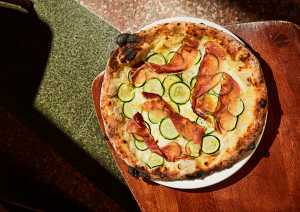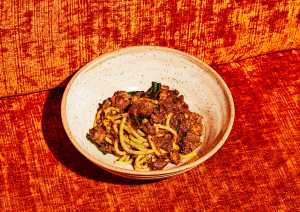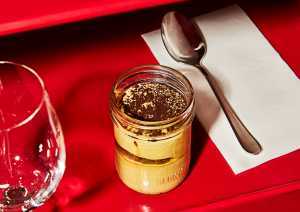Multiple lockdowns in Ontario have been crippling for the hospitality industry, but for Alida Solomon, the chef and owner at Tutti Matti — downtown Toronto’s go-to spot for traditional Tuscan fare — it’s all just another day in the life of a restaurateur.
“We’ve been through two pandemics — because we were open during SARS — so this is my second rodeo,” says Solomon. “Then we had a flood. I was making jokes that I live my life like the Jewish holiday Passover.”
So how exactly did a young, Jewish history and geography major (with no Italian heritage), come to make some of the most authentic and delicious pasta, pizza and antipasti in the heart of Toronto?
“I fell in love with Italy on our very first trip,” says Solomon, who tagged along with a good friend who was travelling to Siena, Tuscany, on a University of Toronto exchange program. However, unlike the other students, who sojourned in university accommodation, Solomon bunked up with nuns.
“As a Jewish kid, I thought I was going to wake up with a giant crucifix on top of my body,” Solomon laughs. “I would take it down from the wall, and every morning, the nuns would come to make my bed and put it back.”
Unperturbed, Solomon continued to soak up all things Mediterranean, visiting frequently in the years that followed and living in Italy from the end of 1995 until 2000. During that time, she worked at Osteria di Porta al Cassero in Montalcino, where, under the tutelage of the owner Piero, she mastered everything from tiramisu from scratch to deboning a wild boar.
“I would never have learned any of that — even at a big restaurant — if I hadn’t gone to a small osteria,” says Solomon. “I learned how to make pasta by hand. I learned the importance of simplicity. And that was one of the first places that I ever worked (which really defined me as a chef) where I was just like, ‘this is so beautiful. Why do I need to do anything else?’”
It was also here that Solomon realized just how vast the gulf could be between authentic Italian food and the dishes in Canada.
“I was mortified when I came back home. I make jokes that capellini is a North American export because no Italian eats capellini. Portobello mushrooms don’t exist, tilapia doesn’t exist. These are things that were genetically modified for our market.”
And not just the ingredients. The eating style varied from how Italians break bread: “In Italy, you eat pasta to taste the pasta ... Whereas in North America, it’s all about the topping.”
Keen to bring some Tuscan simplicity to Toronto, Solomon opened Tutti Matti (meaning ‘everyone’s crazy’) on Adelaide Street in 2002. But not everything on her menu was a home run: “That’s where pasta, for me, gets lost in translation. People will say, ‘well, your pasta sauces are a little drier’. And I’m like, ‘yeah, because I spent all this time making this pasta — I want you to taste the pasta!’ If you bury it in a tomato-cream sauce, you don’t actually taste the pasta. I think that was the hardest adjustment for me, to realize that I had to change things.”
There are, however, some things Solomon refuses to compromise on. “This is the argument I have with people all the time: ‘You’ve been open 19 years and you never serve chicken?’” So we shouldn’t expect to see chicken cacciatore on the menu any time soon? “It would open a can of worms and then I could never get people to eat properly,” answers Solomon cheekily.
Menus may change and shiny new playthings may come onto the scene — like the wood-fired oven she paid piano movers $1,200 to bring into the restaurant for her 45th birthday (“who doesn’t love pizza?”). But it’s the consistency — from the pasta to Solomon herself still greeting regulars on a Saturday night — that has made Tutti Matti a favourite.
“In the past, sometimes I think I was competing with myself. And then, I realized, I love what I do, so why don’t I just do what I do? And I think people appreciate that.”
Tutti Matti's most iconic dishes
Burrata

Carmen Cheung
“In the summer, our burrata gets the tomato treatment, when it’s appropriate. Normally in the winter, I like a hot application — so, the sautéed radicchio with the chanterelles, blazing hot on top of the burrata. Right now we’re doing roasted apples, pears or sometimes pomegranate seeds. In Italy, they eat it just as is because it tastes really good. We have always bought our burrata from the same people that make our pecorino. It’s from a cooperative outside of Florence. People make jokes in Italy that the burrata is fresher in Toronto, because it takes like four days on a truck to get from the south of Italy. You get this beautiful burrata that’s higher in fat content with a much thinner skin, and really loose on the inside. You’re supposed to be able to touch it with your finger, then the skin breaks and all this beautiful stracciatella falls out.”
Stella Rai

Carmen Cheung
“As a chef, I think what people forget is that there’s no shame in learning new skills. We hired a pizza consultant called Nick. I said, ‘I want a pizza that is not Roman and not Napoletano,’ I wanted somewhere in the middle. The recipe that we have, when you fold it, it doesn’t fall on you and drip all over you. It has some strength to the dough. We use a Canadian flour, we don’t use an Italian flour, which is unusual in Toronto. I always wanted to have a pizza that belonged to us and I think the one we’re doing right now is phenomenal, because it’s not wet. I didn’t want all of those North American toppings. I wanted melted taleggio — stinky cheese. I wanted chanterelles during chanterelle season. I love speck from the north of Italy. I want all of those flavours and I don’t want it to be a sauce party. We use a salted raw tomato sauce, so it’s not cooked out. They’re normally named after people that mean something to me — Stella Rai [with fontina, speck, zucchini and fior di latte] is my niece.”
Radicchio Salad

Carmen Cheung
“In Italy, when you order a salad they bring you the ‘continental’ with oil, vinegar, salt, etc. — but they actually don’t dress a lot of salads. They tend to eat salads to help with digestion. I love a good salad. I am known by my staff for always eating a massive salad at some point in the day straight out of a mixing bowl. We always have a version of a radicchio salad — it’s a winter salad that sometimes has a winter citrus — but in this version, it has gorgonzola, walnuts and pickled beets. I love radicchio, I think it’s such a beautiful salad.”
Wild Boar Ragu

Carmen Cheung
“Wild boar is the one thing that we’re known for. Over 19 years, we’ve always had issues with different butchers trying to pawn pork as wild boar to me. The colour and the smell is not the same. A lot of the stuff that we’re getting now is from Saskatchewan. We only bought Ontario wild boar for years. The one we get now is a Yugoslavian crossbreed, and the snouts are very different. I marinate for five days; we use front and back legs. I dice it all. I don’t remove any of the fat because we’re braising it. I put it into juniper and fresh rosemary, no salt. It goes into a deep, wet bath of red wine. It becomes almost like a purplish colour. I use less tomato than they do in Italy, just a little for colour. And we make a porcini cream. We always did pinci [pasta] rolled by hand — we would all stand around a table for three days a week and roll pasta. Obviously, during the pandemic things started to change. The one that you have today is done on the machine and not by hand, which is kind of sad, but we just don’t have time.”
Tiramisu

Carmen Cheung
“It’s a funny story because it was an evolution of 20 years. I learned how to make tiramisu in Osteria di Porta [in Montalcino, Italy] in 1997. That was the recipe I used up until two years ago when the owners of Roscioli came and we did a dinner with Charlies Burgers. And Alicia, the chef, said ‘You know why your tiramisu breaks sometimes?’ Because we would use the egg whites. So she said, ‘Just do 500 grams of egg yolk, 500 grams of sugar and 1.5 kilos of mascarpone.’ We did it together and it changed my life. It was nice, female chef to female chef. She was like, ‘I’m gonna give you this recipe — but it’s a secret.’ On the back of the Galbani marscapone container is the six egg yolk recipe that every Italian uses. I always say to people, Italian food is not rocket science. Historically, it’s been the same forever. It’s just your interpretation, right?”

